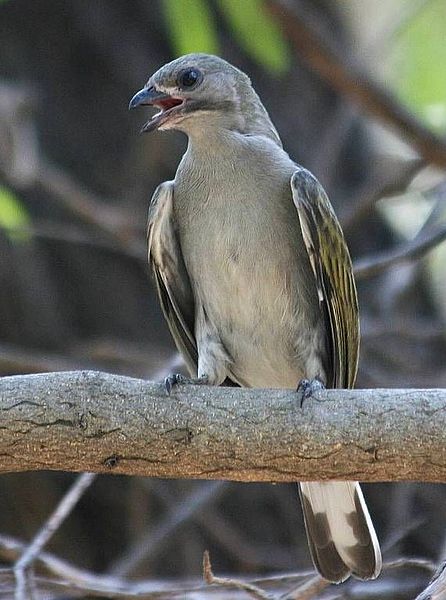
Melichneutes robustus
TAXONOMY
Melichneutes robustus Bates, 1909.
OTHER COMMON NAMES
French: Indicateur а queue-en-lyre; German: Leierschwanz-
Honiganzeiger; Spanish: Indicador Cola de Lira.
PHYSICAL CHARACTERISTICS
6 in (17 cm). Long, lyre-shaped tail is most distinctive feature;
two median pairs of retrices are curved outward at distal
ends, outermost retrices are narrow and short.
Undersurface of tail is white; bird shows the white part conspicuously
in flight. Both sexes uniformly olive-green above
and whitish below; female shows some gray streaks on rear
underbelly, and tail is not as large or exaggerated, but has
similar shape.
DISTRIBUTION
Two separate areas of
DISTRIBUTION
in western Africa, one including
Sierra Leone, Liberia, and the Ivory Coast, the other,
larger area centering around Cameroon.
HABITAT
Lowland tropical rainforest.
BEHAVIOR
Only incomplete information on
BEHAVIOR
, since species is rare
and individuals are difficult to spot. The spectacular aerial displays
are described below. Individuals have been seen perched
in trees near bees’ nests, and associated with barbets and tinkerbirds,
presumably as preferred brood hosts.
FEEDING ECOLOGY AND DIET
Includes beeswax, bee larvae, and other arthropods.
REPRODUCTIVE BIOLOGY
Most spectacular mating display of all honeyguides. The male,
airborne, voices several “peee” notes, then executes rapid, steep
dive with tail feathers spread. Those feathers produce a signatory
“kwa-ba kwa-ba” series of sounds. Male may also ascend
and descend in spirals.
CONSERVATION STATUS
Not threatened.
SIGNIFICANCE TO HUMANS
None known.
Other popular Animals
Photo Gallery of - Lyre-tailed honeyguide




 Animalia Life
Animalia Life